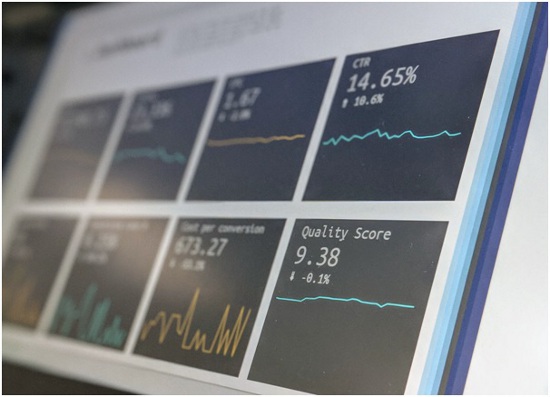The following will explore the popular business management approach of six sigma, explaining what the methodology is and how it can benefit businesses. The focus of six sigma management is individual projects, and this means the approach can be applied to several elements of a business at one time.


What is Six Sigma?
Six sigma, sometimes written as 6σ, is a series of techniques as well as tools that can be utilized to improve a process. The concept was developed in 1986 by an engineer named Bill Smith while he was working at Motorola.
The goal of the six sigma strategy is to improve manufacturing quality by first identifying the causes of defects and minimizing those causes. Next, the strategy focuses on minimizing variability in the process of manufacturing and running the business. Typically, this involves statistical quality management processes. A six sigma methodology is used as well as specific and measurable value targets.
Six Sigma Mission Statement
Six sigma approaches have a few assertions that provide the foundation for the work to be done. First, prioritizing continual efforts to create stable and predictable process results is essential for a business to succeed. Second, manufacturing processes along with business processes have characteristics that can be measured, defined, and analyzed; therefore, they can also be improved and controlled. Third, sustained improvement of quality involves commitment from the whole organization. Fourth, the focus should be on achieving measurable results as well as quantifiable financial returns. Fifth, there needs to be an emphasis on both management leadership and support. Sixth, you need to commit to the idea of making decisions based on verifiable data and statistical methods.
Influences
Six sigma, much like the similar methodology of lean management, was influenced by Japanese business culture. Both systems focus on using data to eliminate issues; lean management seeks to remove waste and inefficiencies whereas six sigma focuses on eliminating defects and variation. Of the two, six sigma is more data-focused.
Methodology
There are two project methodologies within the six sigma system. Your choice of method will depend on your project. The DMAIC method is tailored for projects that revolve around improving an existing business process. The DMADV method is used for projects that involve creating a new product or process.
DMAIC Methodology
The DMAIC methodology uses five distinct phases: the define phase involves defining the voice of your customer as well as their standards, expectations, and requirements in addition to your specific project’s goals. The measure stage involves measuring all key aspects of your current process in order to have a collection of relevant data and understand what your current capabilities are. The analyze phase involves investigating causes and effects using your data, doing your best to make sure that all factors have been taken into consideration. This phase also involves seeking out the root cause of any defects, given the information you have. The improve phase involves using the information you have in addition to techniques like the design of experiments, mistake proofing, or poke yoke to create new, more stable future state processes. Pilot runs or beta tests are often used at this stage to ensure that data has the desired results. Finally, the control phase revolves around controlling future processes to ensure that deviations from your targets are corrected before they produce defects. This typically involves control systems and continuous monitoring of processes.


DMADV Methodology
Sometimes DMADV is referred to as DFSS (which stands for design for six sigma). This methodology has five phases as well. The first involves defining the goals that you have. You want to pay attention to customer needs and demands as well as your enterprise strategy. The second phase involves measuring the characteristics that are critical to quality (CTQs), product capabilities, production processing capabilities, and risks. The third phase involves analyzing your measurements with the goal of developing and designing alternatives. The fourth phase involves designing an alternative using your analysis. The final phase involves verifying the design. Again, this often uses pilot runs and beta testing as part of the confirmation process.
Who Can Conduct Six Sigma Methods?
While these principles can be applied by anyone, there is a six sigma certification process that can produce professionals who are experts in these methods. Typically, six sigma certification includes learning six sigma materials and taking a test. Formal testing and certification involve participating in a martial arts-inspired ranking system involving several stages of learning. These stages are green belt, black belt, master black belt, champion, and executive leadership.
What Are The Benefits Of Employing Six Sigma?
While there are a ton of benefits of employing six sigma (particularly if you have a poor or nonexistent structure for studying your processes and outcomes), one of the most vital is an improvement in product and business consistency. Customers typically want the same product or outcome each time they use a business, and this means that variability can lead to customer loss or dissatisfaction. Since six sigma puts such a strong emphasis on customer satisfaction and the eradication of variation, you tend to see improvements in these areas quickly.
Another benefit of the six sigma approach revolves around employee motivation. Saving your staff time and energy can dramatically increase employee satisfaction and motivation. These benefits, in turn, can positively influence work performance and employee turnover rates.
Another improvement often experienced by those who apply the six sigma methodologies is time management. Because six sigma focuses on efficiencies and eliminating errors like variability, many people notice an improvement in effective time management. This is because time isn’t wasted on fixing errors.
Strategic planning is also often greatly benefitting by the six sigma approaches. This is because it’s far easier to develop a winning strategy around consistent outcomes than it is to develop a solid strategy around flawed, variable, or inconsistent outcomes. If you know with certainty that you can consistently produce what you need to, expansive and growth-oriented strategies have stable ground to build on.
The above information should have explained what six sigma methodologies are and how they can benefit businesses. It’s important to note that all of the above information involves regular checkups and fine-tuning. While six sigma approaches will create improvements, if they are consistently applied over the course of many months or years, the improvements can be compounded.
















